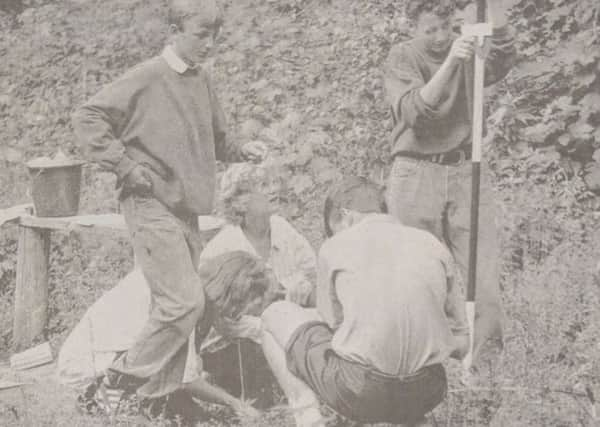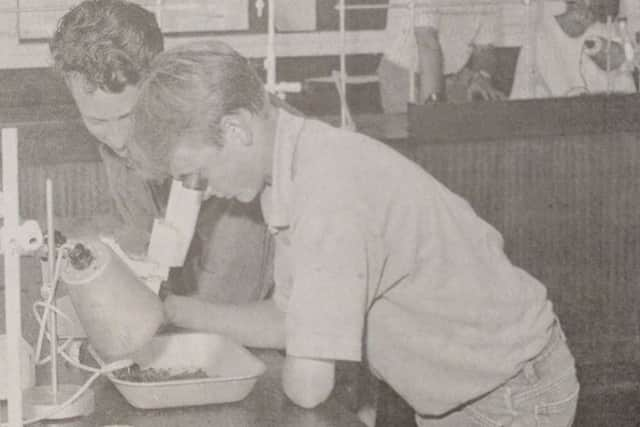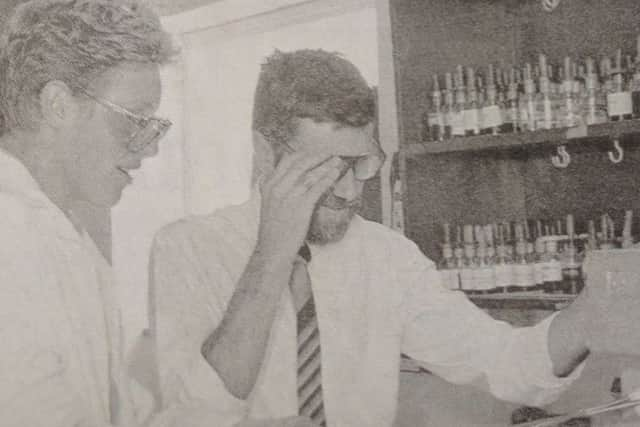Nostalgia: Scientists search for answers at historic Amberley chalkpits


The Amberley chalkpits museum, also previously known as the Amberley Working Museum and Amberley Museum, today is known as Amberley Museum and Heritage Centre.
The museum, located near Arundel, was founded in 1979 by the Southern Industrial History Centre Trust.
Advertisement
Hide AdAdvertisement
Hide AdYears ago, the South Downs provided a natural abundance of material from pits, mines and quarries.


What is now the Amberley Museum and Heritage Centre is sited in a former chalk quarry where the chalk was converted into lime for use in mortar and cement.
The chalk at the Amberley site had been burned in kilns to make lime for such purposes as building materials and fertilizers.
The site has a fascinating history, and the chalkpits have connections with both industrsy and culture.
Advertisement
Hide AdAdvertisement
Hide AdIn 1993, lecturers, along with a group of students from the college’s school of science, conducted a plant survey and collected soil samples from several sites.


Laboratory analysis was carried out during the rest of the week.
The chalkpits stopped lime production in the early sixties, and staff there wanted to know why plant types established on spoil heaps were different to those thriving on the open quarry now that quarrying had stopped.
Dr Robert Allgrove, head of the school of science, said: “Carrying out tried and tested laboratory exercises is an essential part of scientific training.
Advertisement
Hide AdAdvertisement
Hide Ad“It is, however, far more of a challenge for students to have to apply scientific principles to real life situations.”
This investigation involved biology, geography and chemistry, and gave students an insight into how these disciplines integrated in any environmental work.
An enormous amount of data was collected, and it was hoped the results would be out on display at the museum onces the results had been documented.
Dr Allgrove said the week’s work coincided with activities week, the annual visit to the college of groups of 15 year old students from schools in West Sussex.
Advertisement
Hide AdAdvertisement
Hide AdThis was designed to give school students some idea of college life and career options a year before they left school.
Those planning to take A-level science subjects at the college were able to work alongside students carrying out the survey.
Visitors to Amberley Museum and Heritage Centre can find out more about the chalkpits at the current De Witt Kilns and Life and Lime exhibition.
The exhibition ‘Life and Lime’ now tells the history of the local people involved in the quarrying of chalk and burning of lime on the museum site.
Advertisement
Hide AdAdvertisement
Hide AdExhibits include a narrow-gauge railway and bus service (both provide free nostalgic travel around the site), Connected Earth Telecommunications Hall, Milne Electricity Hall, Printing Workshop. Find out more about the museum by visiting the website at www.amberleymuseum.co.uk.